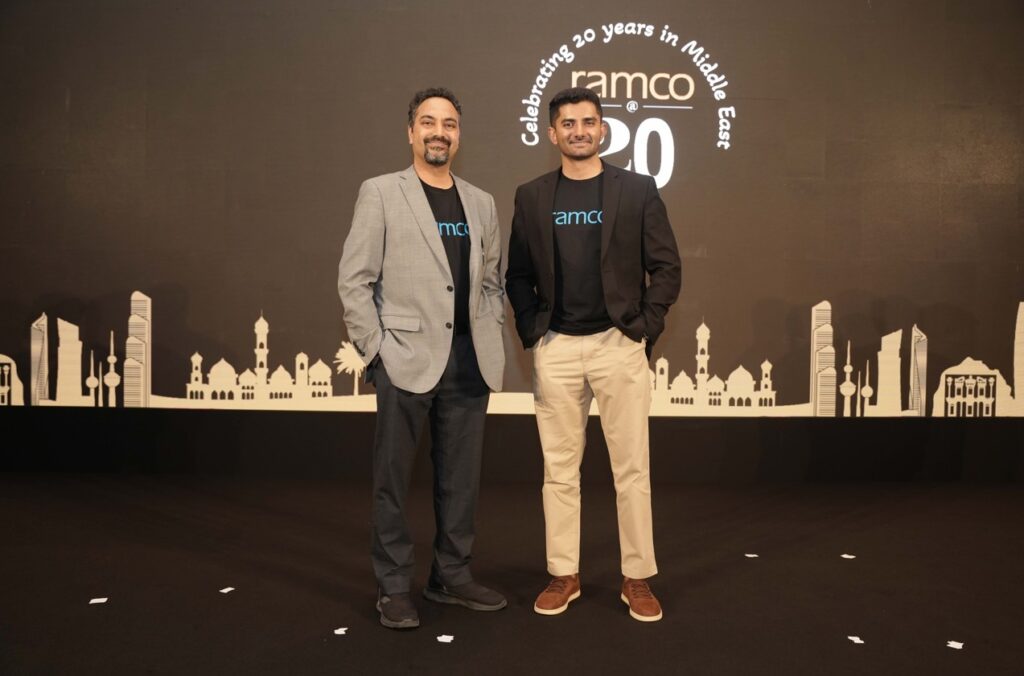Technology
Dyson announces cutting-edge developments across its floorcare technologies in the Middle East

Dyson is well-known for creating pioneering floorcare technologies that revolutionize the vacuum cleaner industry. As we head into a new season, Dyson has unveiled three new products available in the Middle East that bring together the most advanced software and intelligence to get the best-ever cleaning performance.
The new technologies available in the region from today include Dyson’s most powerful cord-free vacuum the Dyson Gen5detect, the Dyson Submarine™ wet roller head; the brands first wet vacuum cleaner, and the Dyson Humdinger, Dyson’s lightest cordless handheld vacuum to date.
Dyson’s team of in-house microbiologists have been studying real dust from around the world for almost 20 years, analyzing particles measuring 70 microns in size – the width of human hair – right down to 0.1 microns, the size of a virus. Dyson’s labs are also home to a farm of dust mites, enabling scientists to collect their faeces and learn more about dust mite allergens. Only through this extensive research can Dyson engineers continue to engineer new vacuum cleaner technologies, to better deal with the conditions they face in the real world.
Dyson’s recent Global Dust Study revealed that in the last year, there has been a significant reduction in the number of people maintaining regular cleaning schedules, yet consumers still spend 25 minutes a week, the equivalent of 65 hours per year, vacuuming homes. In the same study it was found that the UAE and KSA ranked the highest globally, with 63% of people from KSA and 61% of UAE, saying they worry about viruses in the home.
The Dyson Gen5detect cordless vacuum, tackles this worry as it features fifth generation Hyper-dymium motor technology spinning at up to 135,000 rpm delivering unrivalled suction power, capable of capturing viruses from the home. The machine features a fully sealed, whole-machine HEPA filtration system, engineered to capture 99.99% of particles down to 0.1 microns[2]. 14 cyclones also remove dust from the airflow so there’s no loss of suction, ensuring optimal performance with every clean.
The Gen5detect offers an energy dense battery with 70 minutes run-time and possesses a number of new and re-engineered features such as the Fluffy Optic cleaner head which produces increased brightness and range with the blade of light revealing twice the amount of microscopic dust. Additionally, the product features a completely re-engineered user interface (UI) that now shows users in real-time when their surface is clean. A piezo sensor uses acoustic sensing to count and categorize particle sizes, and bars on the LCD screen now rise and fall according to volume of particles being removed in real-time – so owners know when to move on or spend more time cleaning.
James Dyson, Founder and Chief Engineer at Dyson, says: “The Gen5detect defines Dyson’s next generation of cleaning technology. It is the combination of our dust light optic technology, dust particle counting and sizing, pioneering new motor and whole-machine HEPA filtration, that enables you to achieve our deepest ever clean.”
33,997 online interviews across a representative sample of 39 countries. Fieldwork was conducted between 11th January and 6th February 2023. Data has been weighted at a ‘Global’ level to be representative of different population sizes.
Filtration tested against ASTM F3150, tested in Boost mode by independent third-party, SGS-IBR Laboratories US in 2022. Filtration efficiency is calculated by comparing the number of standardized dust particles entering the vacuum cleaner against those released. The capture rate may differ depending on actual environment and the mode.
Suction tested to IEC62885-4 CL5.8 and CL5.9, tested at the flexible inlet, loaded to bin full, in Boost mode by independent third-party, SGS-IBR Laboratories US in 2022.
Compared to the original Dyson Laser Slim Fluffy™ cleaner head. Effectiveness influenced by ambient light conditions, debris type and surface
Best accuracy achieved in Auto mode. Auto ramp feature in Auto mode only. Testing based on average in home usage according to Dyson internal test data.
Quantity and size of dust displayed on screen varies depending on usage. Examples shown may occur within one or more displayed size range. Automatic suction adaptation only occurs in auto mode. Applies in Eco mode on hard floor. Actual run time will vary based on power mode, floor type and/or attachments used.
Dyson’s Global Dust Study identified that the UAE and KSA were the markets whose residents use two-in-one mop and dry vacuums the most globally. As a result of this appetite for wet and dry vacuuming products, Dyson have introduced their first product in this category; the Dyson Submarine™ wet roller head, available with the Dyson V15s Detect Submarine and Dyson V12s Detect Slim Submarine vacuums.
The Submarine delivers just the right amount of water to effectively remove spills, stains, and small debris from hard floors. To achieve an optimum ‘clean floor’ finish without over saturating, the wet roller head has been engineered with an eight-point hydration system, using a pressurized chamber for even water distribution across the full width of the roller.
The motor-driven microfiber roller removes spills, tough stains and small debris, covering flooring up to 110m2, thanks to a 300ml clean water tank. A durable plate extracts contaminated water from the wet roller and deposits it into a separate waste-water tank to ensure no dirt and debris is transferred back onto the floor. Designed with a low profile and full-width brush bar, the Dyson Submarine™ wet roller head allows for effortless maneuvering underneath furniture, cleaning dust, debris, and spills from even the most awkward places.
The final product joining Dyson’s impressive floorcare range is the Dyson Humdinger™, the most powerful, lightweight handheld vacuum that traps 99.99% of microscopic particles with no loss of suction. Engineered for every day quick handheld cleans, the Humdinger’s™ compact and lightweight versatility and specialized cleaning tools allows users to effectively move between the car, home, or hard to reach places.
Coming with three specialized tools including a mini motorized tool, perfect for mattresses upholstery and stairs, a combination crevice tool, designed for hard to reach and narrow spaces, and a surface tool engineered to pick up small and large debris on hard surfaces. The 20-minute run time gives users the option of quick and effective cleans for speedy spill clearance.
Tech News
Loylogic Shares 2026 Vision to Advance the Global Rewards Marketplace

Advanced AI innovation, intelligent marketplace design, and trusted global infrastructure position Loylogic for continued leadership in rewards and loyalty commerce.

As the Middle East loyalty market is projected to reach $3.27 billion in 2025, expanding 16.3% year-on-year, and digital-first, personalized, and coalition-based models reshape the industry, brands face rising expectations around relevance and engagement. Against this evolving landscape, Loylogic, a leader in global loyalty rewards management, today shared its 2026 strategic outlook, outlining how the company is evolving its global rewards marketplace to support brands navigating rapidly changing loyalty expectations.
The company enters the year with a renewed focus on continued investment in AI-powered rewards marketplace intelligence, enhanced catalogue curation, and deeper integration capabilities designed to improve reward relevance, partner value, and member experience across industries and geographies. Rather than simply expanding choice, Loylogic’s approach centres on intelligent rewards marketplace design, aligning consumer relevance, operational efficiency, and long-term value creation within a single global platform.
To support enterprise scale deployment, Loylogic continues to operate under a robust compliance and security, compliance and governance framework. The company adheres to internationally recognised standards ISO 27001, GDPR, PCI DSS, and AES-256 encryption, ensuring secure and trusted data handling across every layer of its technology while maintaining alignment with the European Accessibility Act 2025 and WCAG 2.0. All platforms remain adaptable to regional data residency and regulatory requirements.
“As loyalty programs mature, brands are looking beyond scale alone,” said Gabi Kool, CEO of Loylogic. “They want reward ecosystems that are smarter, more relevant, and commercially sound. Our focus for 2026 is about advancing how global rewards marketplaces are designed, governed, and experienced, combining intelligence, trust, and flexibility.”
Advanced AI innovation is central to Loylogic’s next phase of growth. Loylogic continues to enhance its use of advanced analytics and machine learning to support smarter reward discovery, improved marketplace performance, and deeper insights for loyalty operators, while maintaining strict standards for privacy, security, and compliance.
“Our innovation efforts are focused on making rewards marketplaces more intelligent and adaptive,” said Amit Bendre, COO of Loylogic. “This means better insight, better decision support, and better experiences, without compromising on trust, transparency, or regulatory rigor.”
Looking ahead to 2026, Loylogic plans to deepen collaboration with global partners, engage more actively with industry stakeholders, and selectively strengthen capabilities across commercial, product, and technology functions, supporting a growing pipeline of enterprise clients across financial services, travel, and consumer sectors. With a proven global infrastructure, deep marketplace expertise, and a clear strategic direction, Loylogic continues to help leading brands transform everyday engagement into meaningful, long-term loyalty.
About Loylogic
Loylogic is a leader in global rewards marketplaces for loyalty and incentives management, enabling brands to deliver scalable, flexible engagement experiences through a modern commerce platform. Its global catalog and redemption marketplace support meaningful engagement across B2C, B2E, and B2B programs worldwide. With deep expertise in sourcing, fulfilment, and patented points-plus-cash innovation, Loylogic has enabled over 200 billion points and miles transactions, delivered more than $1 billion in commerce, and shipped experiences spanning 100+ categories across 190 countries to more than 10 million loyalty members worldwide.
Tech Features
The Bold AI Rewrite of Enterprise Software!

By Srijith KN, Senior Editor, Technology Integrator
Celebrating more than two decades in the region—and backed by over 800 enterprise customers—Ramco Systems is not merely expanding; it is doubling down on its presence. With a 50-member local team and a roadmap anchored in deep product localization, the company’s strategy is clear: build for the region, in the region. Local language support, government-portal integrations, and strict alignment with regional data privacy laws form the foundation of Ramco’s next chapter.

At the media roundtable held in Dubai as part of Ramco@20, Integrator had a front-row view into the company’s transformation; one that is not just incremental but architectural. From pioneering client-server systems to shaping modern SaaS platforms, Ramco has long played in the innovation lane. But what they are now setting their sights on could reshape the enterprise software landscape once again: AI-native enterprise systems.
From System of Record to System of Intelligence
Ramco’s next strategic leap is a shift from traditional enterprise software—rigid, transactional, and complex—to a fluid “system of intelligence.” Imagine an enterprise app that doesn’t wait for instructions but proactively surfaces insights, flags anomalies, and allows employees to manage operations through natural conversation. That is the future Ramco is building toward.
One of their strongest verticals—HR and payroll—illustrates this ambition. They already support organizations with massive workforce structures, including companies with over 100,000 employees and more than 1,000 pay components. Under an AI-powered interface, many of these complicated workflows will compress into simple prompts, removing friction from one of the most complex business domains.
A ChatGPT-Like Canvas for Enterprise Work
The company demonstrated an early preview of its conversational interface; a clean, unified canvas where users can query pending purchase requests, generate reports, or even create purchase orders using a single natural language prompt. The UX remains consistent for all, but the underlying workflows, context, and AI-generated outputs adapt to individual users and company-specific processes.
But the most compelling use cases emerged when the discussion shifted to aviation; a sector where Ramco already has deep domain expertise.
AI on the Hangar Floor: A Glimpse into Aviation’s Future
Picture a technician standing beside a massive aircraft engine, disassembling components, identifying faults, replacing parts, and logging every detail meticulously. Aviation is unforgiving—every part must meet airworthiness standards, track flying hours, and comply with stringent regulations. Only certified personnel can work on the engine, and even the tools they use must be OEM-mandated.
Now layer AI into that setting.
As a technician opens an engine and reports an issue—say, a damaged blade—the AI instantly scans 15–20 years of historical maintenance data. It recognizes patterns and alerts the technician:
“John, you’re replacing this blade on an A380. Historically, whenever this part is replaced, another related fault tends to appear within eight months. Would you like to inspect that area as well?”
This is not a textbook recommendation. It is institutional memory—decades of real-world faults and fixes—surfacing as real-time intelligence. The system becomes a second expert on the floor, conversing with technicians, guiding actions, and ensuring nothing slips through the cracks. This simple conversational canvas, Ramco argues, has the potential to reshape ground-level operations in one of the world’s most complex industries.
The Critical Question: What About Data Privacy?
As enterprise AI evolves, the most pressing concerns are no longer about innovation; they’re about protection. So, we asked the question that matters most: How does Ramco secure customer data in an AI-driven future?
Their answer was reassuringly clear:
- All AI workloads are hosted locally within the customer’s private environment.
- Data never leaves the region. Workloads are deployed in the customer’s local data center.
- Every customer gets an isolated AI instance. No shared environments, no cross-pollination of data.
- No external web calls, ensuring full containment and compliance.
In an era where enterprises fear the opacity of AI, Ramco is betting on transparency and regional sovereignty.
The Road Ahead
Ramco’s mission is ambitious: to redefine enterprise apps through AI and shift the industry from systems that store data to systems that think. And based on what we witnessed at Ramco@20, this is not a distant vision; it is already taking shape on factory floors, in payroll departments, and inside aircraft hangars.
The next era of enterprise software won’t just automate processes. It will understand them. And Ramco is positioning itself to become one of the first global players to make that leap—from record-keeping to intelligence-building—right here in the region.
About Ramco Systems
Ramco Systems is a world-class enterprise software product/platform provider disrupting the market with its multi-tenant cloud and mobile-based enterprise software, successfully driving innovation for over 25 years. Over the years, Ramco has maintained a consistent track record of serving 800+ customers globally with 2 million+ users and delivering tangible business value in global payroll, aviation aerospace & defense, and ERP. Ramco’s key differentiator is its innovative approach to develop products through its revolutionary enterprise application assembly and delivery platform. On the innovation front, Ramco is leveraging cutting-edge technologies around artificial intelligence, machine learning, RPA, and blockchain, amongst others, to help organizations embrace digital transformation.
Tech News
Webook.com Strengthens UAE Footprint, Bringing World-Class Entertainment Experiences

Webook.com, one of the fastest-growing platforms for booking lifestyle and entertainment experiences in the Middle East, is deepening its footprint in the United Arab Emirates following strong traction across the country.
Founded with a vision to transform how people discover and book experiences, webook.com continues to elevate convenience through a unified platform that brings together entertainment, dining, and leisure in a seamless digital journey.
Within the UAE, webook.com has rapidly expanded its user base while curating a lineup of world-class experiences. From comedy nights with Bassem Youssef to electrifying Teddy Swims concerts and the magic of Disney on Ice, webook.com continues to bring some of the region’s most unforgettable events to audiences across the UAE. Beyond these major hosted events, users can also book global entertainment experiences, including MDLBEAST, Riyadh Season, AFCON and other leading events happening across MENA.
Commenting on the expansion, Nadeem Bakhsh, CEO of webook.com, said: “Webook.com was built to curate the experiences that matter most, from front-row access to world-class entertainment to discovering hidden local gems. Expanding our footprint to the UAE allows us to bring a carefully selected lineup of events and experiences to the region. Our goal is to continue providing variety, quality, and seamless access to unforgettable moments.”
As the platform widens its presence across the UAE, it continues to strengthen partnerships with top entertainment brands, cultural institutions, and iconic venues, enabling users to access an unmatched selection of events and experiences.
Webook.com’s technology has proven itself across multiple markets, handling millions of transactions during major events, tournaments, and high-demand ticket releases. With real-time queueing, robust infrastructure, and flexible integration, webook.com delivers landmark events with unmatched reliability and scale.
With momentum accelerating in the UAE, webook.com aims to transform how people discover, plan, and enjoy experiences, turning every booking into the start of a memorable story. Beyond expanding its presence, webook.com is shaping a movement centered on connection, culture, and the joy of shared moments.
-

 Tech News1 year ago
Tech News1 year agoDenodo Bolsters Executive Team by Hiring Christophe Culine as its Chief Revenue Officer
-

 VAR8 months ago
VAR8 months agoMicrosoft Launches New Surface Copilot+ PCs for Business
-

 Tech Interviews2 years ago
Tech Interviews2 years agoNavigating the Cybersecurity Landscape in Hybrid Work Environments
-

 Tech News5 months ago
Tech News5 months agoNothing Launches flagship Nothing Phone (3) and Headphone (1) in theme with the Iconic Museum of the Future in Dubai
-

 Tech News2 years ago
Tech News2 years agoBrighton College Abu Dhabi and Brighton College Al Ain Donate 954 IT Devices in Support of ‘Donate Your Own Device’ Campaign
-

 VAR1 year ago
VAR1 year agoSamsung Galaxy Z Fold6 vs Google Pixel 9 Pro Fold: Clash Of The Folding Phenoms
-

 Editorial1 year ago
Editorial1 year agoCelebrating UAE National Day: A Legacy of Leadership and Technological Innovation
-

 Cover Story10 months ago
Cover Story10 months agoUnifonic Leading the Future of AI-Driven Customer Engagement














